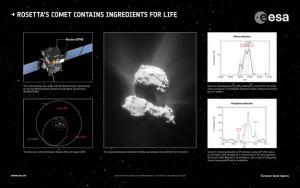Science
Rosetta’s comet contains ingredients for life

Rosetta’s comet contains ingredients for life
- Read more
- 358 reads
More light on cancer: Scientists created nanoparticles to highlight cancer cells

These are confocal fluorescence microscopy images of CF2Th cancer cells incubated with LA-Si NPs.
- Read more
- 375 reads
How light is detected affects the atom that emits it: An experiment suggests it might be possible to control atoms entangled with the light they emit by manipulating detection

In spontaneous emission, wave detection gives you more information than particle detection.
- Read more
- 345 reads
From ‘Magnetoshells’ to Growable Habitats, NASA Invests in Next Stage of Visionary Technology Development

- Read more
- 361 reads
Physicists measure van der Waals forces of individual atoms for the first time

e gas atoms deposited on molecular network are investigated with a probing tip, which is decorated with a xenon atom. The measurements give information about the weak van der Waals forces between these individual atoms.
- Read more
- 348 reads
U.S. Lab Participates in New National Microbiome Initiative

The potential impacts of a unified microbiome initiative to understand and responsibly harness the activities of microbial communities.
- Read more
- 380 reads
Rice experts unveil submicroscopic tunable, optical amplifier: Photonics researchers create first nanoscale 'optical parametric amplifier'

Rice University's new light-amplifying nanoparticle consists of a 190-nanometer diameter sphere of barium tin oxide surrounded by a 30-nanometer-thick shell of gold.
- Read more
- 392 reads
Human Rights
Fostering a More Humane World: The 28th Eurasian Economic Summi

Conscience, Hope, and Action: Keys to Global Peace and Sustainability

Ringing FOWPAL’s Peace Bell for the World:Nobel Peace Prize Laureates’ Visions and Actions

Protecting the World’s Cultural Diversity for a Sustainable Future

Puppet Show I International Friendship Day 2020




